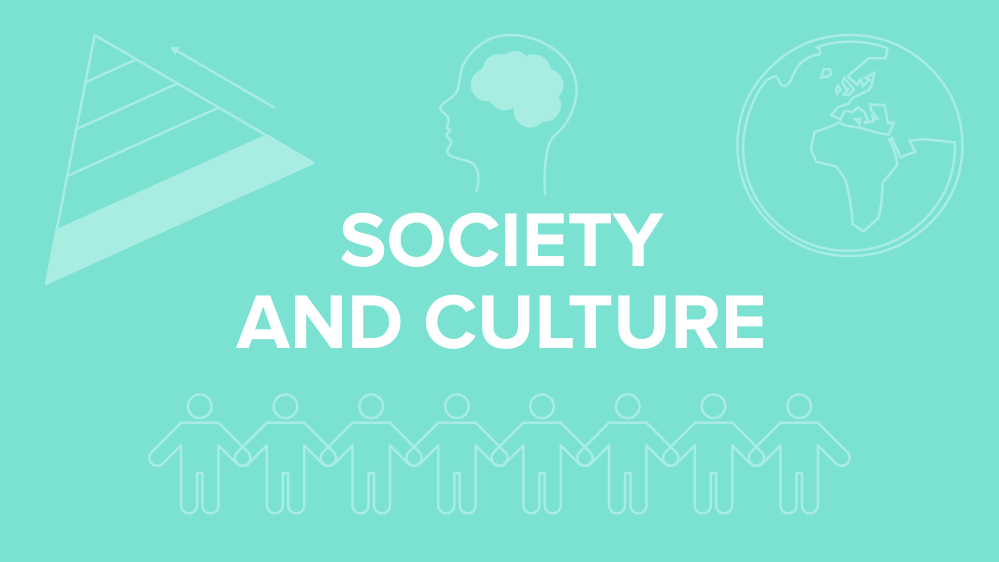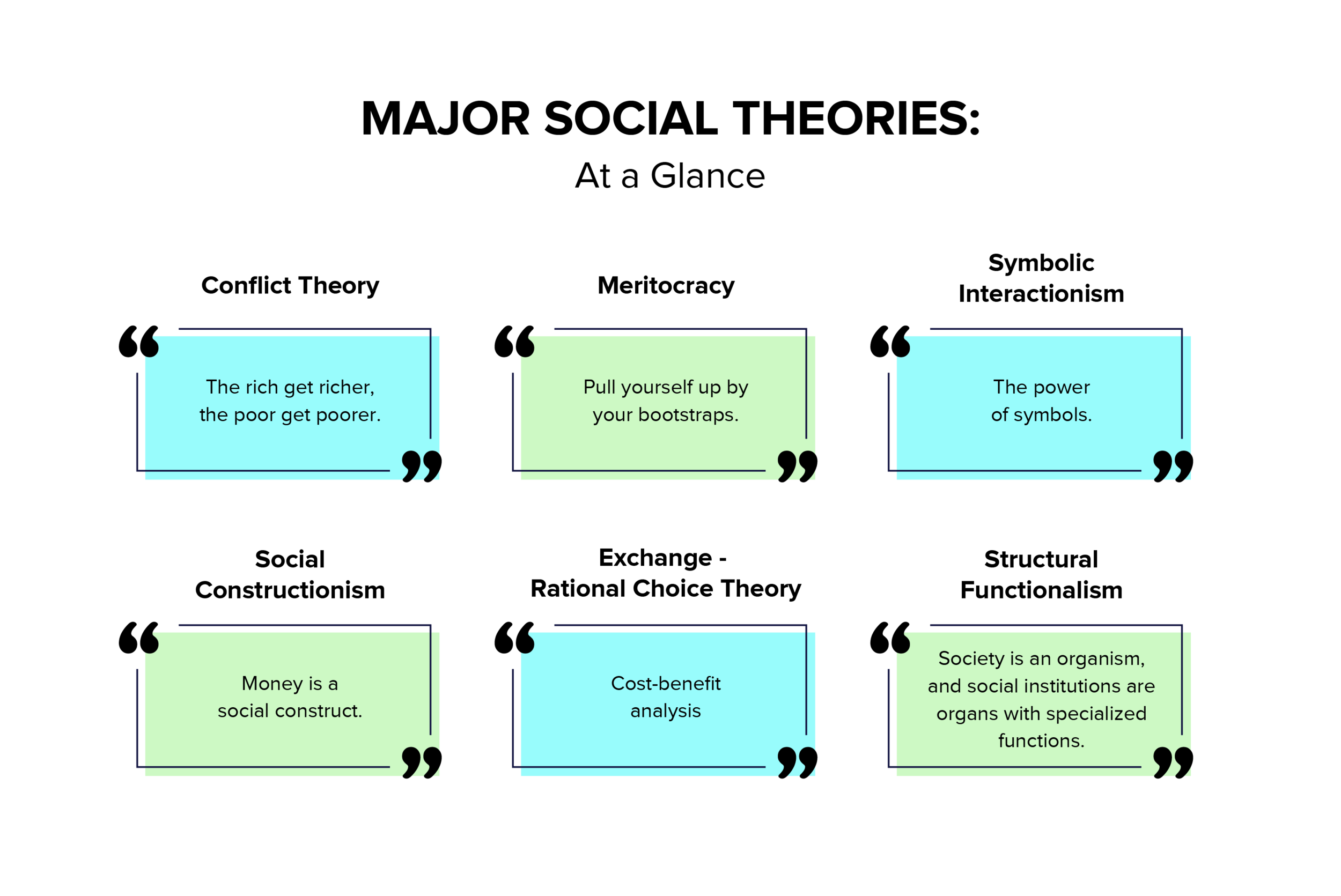Society and Culture for the MCAT: Everything You Need to Know
/Learn key MCAT concepts about society and culture, plus practice questions and answers
(Note: This guide is part of our MCAT Psychology and Sociology series. )
Table of Contents
Part 1: Introduction to society and culture
Part 2: Major theoretical approaches to sociology
a) Conflict theory
b) Meritocracy
c) Symbolic interactionism
d) Social constructionism
e) Rational choice exchange theory
f) Structural functionalism
Part 3: Social structures and institutions
a) Government and economy
b) Religion
c) Education
d) Family
e) Health and medicine
Part 4: Culture
Part 5: High-yield terms
Part 6: Passage-based questions and answers
Part 7: Standalone questions and answers
-----
Part 1: Introduction to society and culture
How can we explain the causes and consequences of social behavior? What roles do social institutions—such as the government, school, and family—play in our society?
Understanding the theories and reasoning behind society and social behavior can be quite overwhelming. Luckily, the MCAT will test you on only the most influential theories and institutions—those that have most influenced the evolution of the field of sociology. You will be expected to identify and differentiate between the various theoretical approaches to sociology and anticipate the potential social impacts of various social institutions.
Throughout this guide, several key terms and concepts will be written in bold. You are encouraged to create your own definitions and form your own comparisons between different social theories.
At the end of this guide, there is an MCAT-style practice passage and standalone questions that will test your knowledge of these concepts. Let’s get started!
-----
Part 2: Major theoretical approaches to sociology
Many theorists and researchers have proposed unique perspectives on social interactions. Each of these theories holds their own unique perspectives on human behavior. Be sure to take note of each theory’s most prominent thinker, its foundational concepts, and whether it adopts a microsociological or macrosociological perspective—that is, if the perspective most strongly applies to interactions between individuals or society as a whole.
As you review each of these theories, consider how the following example situation may be viewed and resolved.
On a snowy day, factory laborers orchestrate a protest outside of a garment factory owner’s house calling for higher wages and reduced working hours.
Figure: How might different social theorists perceive or interpret this sample situation?
a) Conflict theory
Conflict theory, as put forth by the writings of Karl Marx, is a macro-level social theory, which states that unequal division of power in society drives social behaviors and institutions. Conflict theory claims that social institutions are not neutral entities because they are designed by the powerful. Accordingly, social institutions and society favor the wealthy and powerful. This occurs to the continued detriment of the powerless.
These differences in power materialize as conflicts between different social classes: laborers and employers, and the rich and the poor. Marx, a philosopher and economic theorist, wrote about the exploitation of the proletariat (the common wage worker) by the bourgeoisie (the owners of the means of production, including factories and farms). He believed that once the proletariat overthrows the bourgeoisie and seizes the means of production, exploitation would finally end. This event would be the key resolution in society and would provide justice for all social classes.
Common sentiments resulting from conflict theory include sentiments such as “the system is rigged” or “the rich get richer, the poor get poorer.” Both of these phrases highlight the unequal distribution of power in society and the tendency of social structures to reify these inequalities.
In response to the example situation, a proponent of conflict theory may state that: until the rich factory owner stops prioritizing profit, he will continue cutting labor costs. The workers will suffer, and there will always be a conflict between the owners of production and workers.
b) Meritocracy
The meritocratic approach is a macro-level social theory claiming that individuals gain influence and power in society through positive individual qualities, such as talent, diligence, and charisma. Meritocracy suggests that anyone can rise up the social ladder and ascend to a higher social class. As a result, this perspective claims that people possess full autonomy over their social station in life.
Meritocracy implies that there are those who are “deserving” and “undeserving:” by suggesting that people are in control of their social destinies, the theory suggests that people who do not have a high station in society (e.g., people who are unhoused or poor) are in such positions because they lack merit or hard work.
In reality, meritocracy does not consider other structural forces that shape people’s social status or perceived social worth. Many forces that are in an individual’s external locus of control affect social status, including race, ethnicity, and geographic location. Because no society can become truly meritocratic, meritocracy is often discussed in terms of the “myth of meritocracy.” Common sentiments that reflect meritocracy can include statements such as “pull yourself up by your bootstraps” and “you got what was coming to you.”
Note that meritocracy is at odds with conflict theory. At a fundamental level, conflict theory might be considered a pessimistic view of societies, whereas meritocracy is a rose-tinted (overly optimistic) view of society and culture.
In response to the example situation, a proponent of meritocratic society may state that the garment factory owner worked hard to get where he is in life. The laborers should work harder, go back to school, or get a better job if they want to earn more money.
c) Symbolic interactionism
Symbolic interactionism is a social theory applied to one-on-one (micro-level) interactions and how people use specific symbols to communicate specific messages. This theory states that symbols such as words, objects, and gestures gain significance through the social interactions (e.g., habits, rituals, cultural lore, etc.) that are generated. Importantly, these symbols do not gain meaning until individuals in a society agree upon a meaning.
George Herbert Mead and Charles Horton Cooley are considered to be the original founders of the theory of symbolic interactionism. (Recall that Mead also proposed the definition of the “I” and “Me” theory—in which he examined how the self is defined relative to a generalized other.)
In response to the example situation, a proponent of symbolic interactionism may interrogate types of protest signs and armbands they brought to the rally, and why these were meaningful to their message.
d) Social constructionism
Social constructionism is a theory that addresses society on a macroscopic level. The theory was first introduced by Peter L. Berger and Thomas Luckman. Constructionism refers to the phenomenon of “social constructs”—deeply embedded, influential, and abstract concepts, such as money, race, and justice—that possess their meaning as a consequence of society’s active participation in the “meaning-making” of the social construct. Social constructionism also considers how different concepts are understood differently in different historical and geographical contexts.
Symbolic interactionism and social constructionism are highly related, but the theories are distinct. Note that the former deals with individual relationships and exchanges, while the latter addresses views held by society as a whole.
In response to the example situation, a proponent of social constructionism may state that the protest shows how society believes in the concept of justice. The laborers organized because they believe in the power of peaceful demonstration to further justice and societal change.
e) Rational choice-exchange theory
Rational choice-exchange theory is a micro-level social theory advanced by social theorist George Homans. This theory is based upon two claims: 1) individuals behave “rationally” and are able to evaluate their choices based on logical thought and consequences, and 2) as a result, social relationships develop based on an evaluation of exchanges. Each party in a relationship decides that the relationship will result in some favorable exchange of goods, including knowledge, wisdom, companionship, or material items.
In this view, people are inherently self-interested and concerned with the cost-benefit analysis of social interactions. Thus, individuals seek out social interactions because they find gratification and rewards in these interactions.
In reality, humans tend to be irrational actors. This theory fails to take irrational and illogical desires into account—that is, decisions that may be driven by impulse or emotion.
In response to the example situation, a proponent of rational choice-exchange theory may state that the wage laborers weighed the benefits of a protest and the costs of potentially losing their employment and facing the inclement snowy weather. As a collective, the laborers agreed the protest was important—which is why they were present at the protest.
f) Structural functionalism
Functionalism is a macro-level social theory advanced by Emile Durkheim. This theory views different parts of society (such as banks, schools, government, and factories) as structures that fulfill specific and interrelated functions toward a fully functional society. It examines the different functions of varying social structures and how they all contribute to societal stability, interconnectedness, and equilibrium.
Functionalism adopts a holistic view of social structures and likens sociology to other scientific disciplines. A direct comparison between biology and structural functionalism has led some thinkers to use biological metaphors in their explanation of structural functionalism. For example, social structures may be compared to organs and society itself to the entire organism. As societies change across time, these “organs” adapt to maintain order, “homeostasis,” and survival of the greater “organism.”
In response to the example situation, a proponent of functionalism may state that the wage laborer class provides the manpower for our industrial sector. The managerial and industrial sector—to which the factory owner belongs—is responsible for the effective management of large groups of team members. The factory owner is failing to fulfill his role and purpose in society by neglecting the needs of his worker.
Figure: Major social theories to understand for the MCAT.
Gain instant access to the most digestible and comprehensive MCAT content resources available. 60+ guides covering every content area. Subscribe today to lock in the current investments, which will be increasing in the future for new subscribers.




